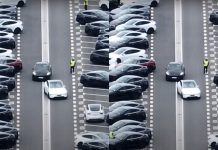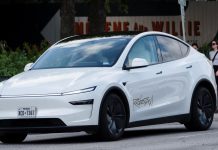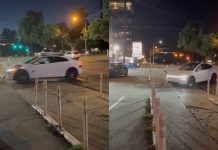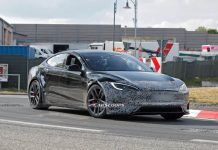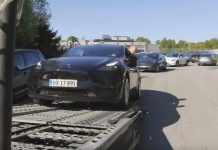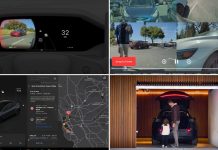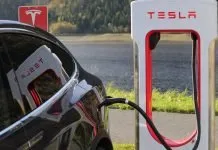Tesla has been continually pushing the envelope in both automotive technology and sustainability. The company’s ambitions extend far beyond just electric cars, Tesla is also a leader in the development of autonomous driving technology. One of their most talked-about initiatives in this space is the Robotaxi, a self-driving taxi service aimed at revolutionizing urban transportation.
Let’s have a comprehensive overview of what we currently know about Tesla Robotaxi, drawing insights from a concept image unveiled in Elon Musk’s biography by Walter Isaacson and various speculations circulating on social media.
Table of Contents
Tesla Robotaxi Concept Unveiled in Elon Musk’s Biography
One of the most revealing sources of information about Tesla Robotaxi comes from Elon Musk’s biography written by Walter Isaacson. The book provides a concept image that offers a tantalizing glimpse into what the future of autonomous transportation might look like.
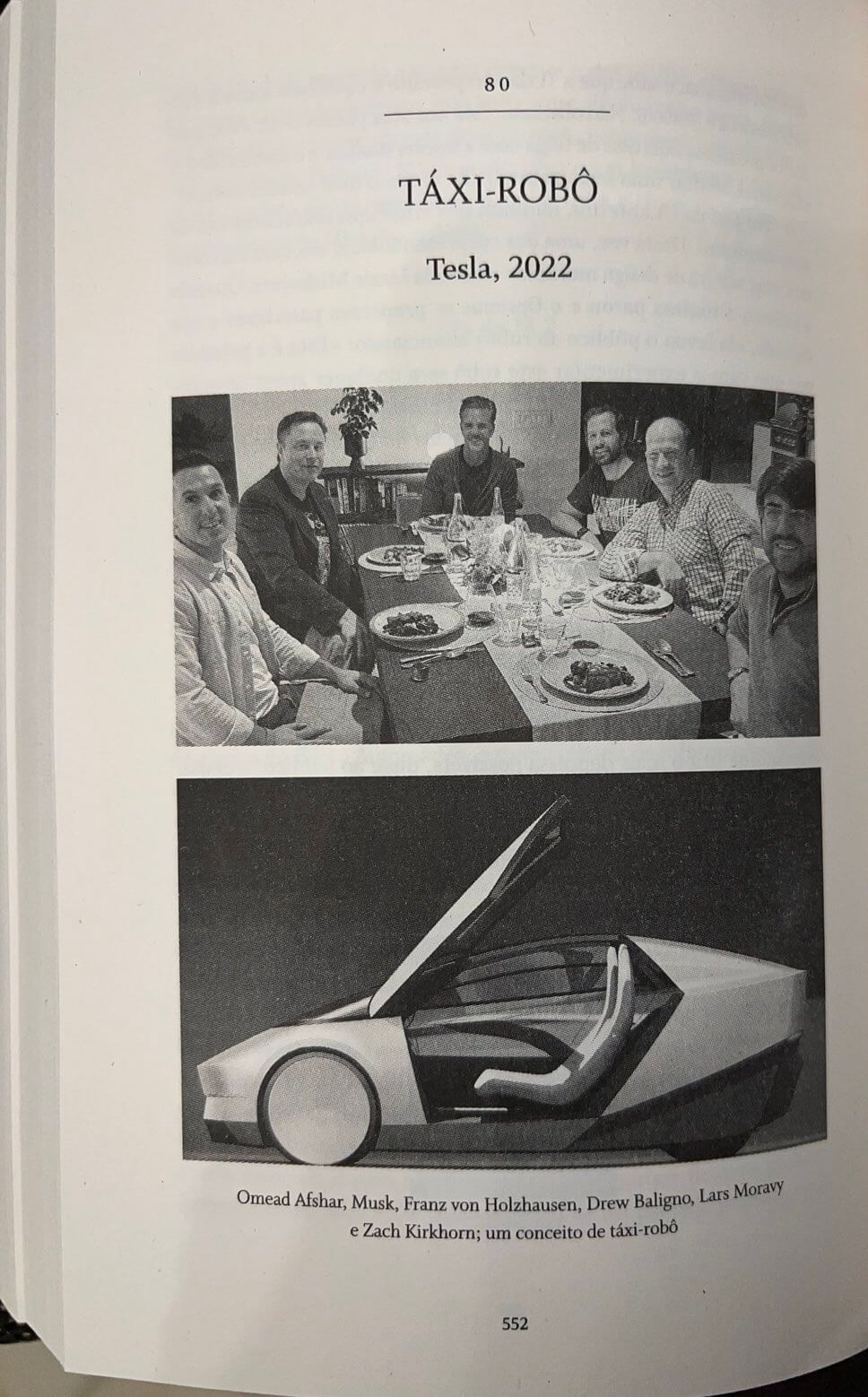
The Tesla Robotaxi concept image is nothing short of futuristic, breaking away from traditional automotive design. It features a vehicle with two seats, devoid of a steering wheel and pedals. This radical departure from conventional car design underscores Tesla’s commitment to fully autonomous vehicles.
Design Features
- Two Seats: The Robotaxi is designed with just two seats, emphasizing its focus on efficiency and practicality for urban commuting.
- No Steering Wheels or Pedals: The absence of a steering wheel and pedals is a bold statement about the vehicle’s autonomous capabilities.
- Butterfly Doors: Adding a touch of luxury and functionality, the Robotaxi features butterfly doors, which are not just aesthetically pleasing but also practical for easy entry and exit.
- Three-Wheel Setup: The concept image suggests a three-wheel setup, although this is still a subject of speculation.
Design Language
The design language of the Robotaxi is as innovative as it is functional.
- Single Row of Seats and Leg Space: The vehicle appears to have a single row of seats, providing ample leg space. This design choice could make the ride more comfortable, especially given that there’s no steering wheel or pedals to obstruct legroom.
- Automated Doors for Better Ingress and Egress: The butterfly doors are likely to be automated, allowing for better ingress and egress. This feature would be particularly useful in tight urban spaces and adds an extra layer of convenience for passengers.
The concept image from Elon Musk’s biography has certainly fueled anticipation and speculation about Tesla’s Robotaxi. While it’s important to note that concept images are subject to change, this initial glimpse offers a lot to be excited about.
The GigaBier Easter Egg
Social media is often a hotbed for speculation and theories, especially when it comes to groundbreaking technologies like Tesla’s Robotaxi. One such intriguing theory that has caught the attention of Tesla enthusiasts is the idea that the unique shape of Tesla’s GigaBier might actually be an “Easter egg” for the Robotaxi.
When Tesla GigaBier was introduced, we thought the shape was a little odd
…now we know why. Easter egg for robotaxi? https://t.co/ROyyGbu0jy pic.twitter.com/7slfAWxv32
— Rebellionaire (@Rebellionair3) September 11, 2023
A tweet recently made waves in the Tesla community by suggesting that when Tesla’s GigaBier was introduced, its unconventional shape was not just a design quirk but possibly a hidden clue or “Easter egg” for the Robotaxi. While this is purely speculative, the tweet has ignited discussions and debates among fans and experts alike.
The notion that Tesla would plant an Easter egg in one of their products is not far-fetched. The company is known for its playful approach to technology, often embedding hidden features or jokes in its software and products. Given this history, the idea that the GigaBier’s unique shape could be a clue about the Robotaxi’s design is not entirely out of the realm of possibility.
Tesla Robotaxi Variants
As the Tesla Robotaxi project continues to generate buzz, one question that arises is whether the company will offer multiple variants of the vehicle to cater to different needs. The idea of Tesla producing two distinct Robotaxi variants has been a subject of discussion, and it’s worth exploring the possibilities.
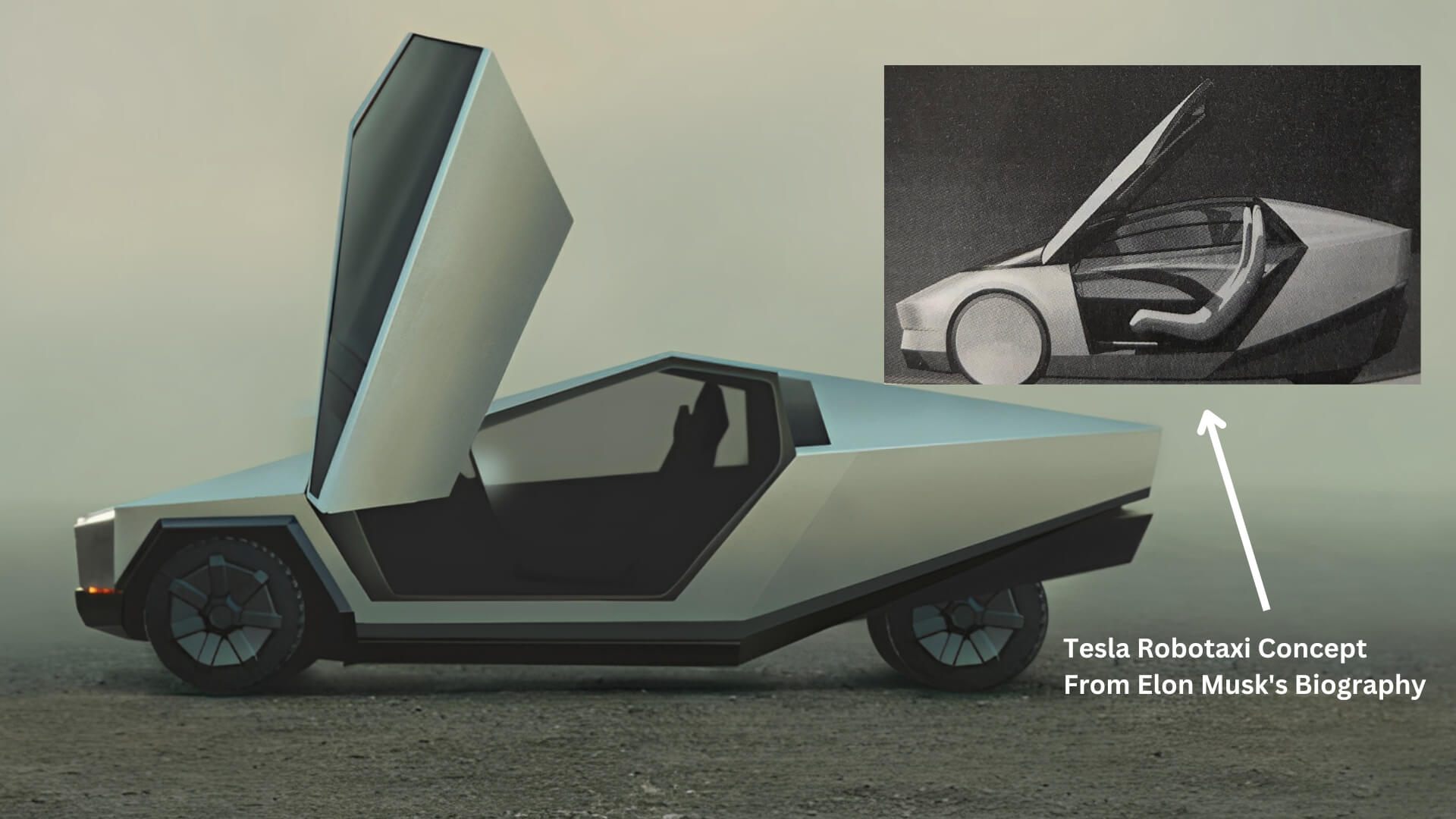
Three-Wheel Variant for One or Two Passengers
A three-wheel variant could be an efficient and practical option for urban commuting, particularly for one or two passengers. The smaller footprint would make it easier to navigate through congested city streets and could potentially offer cost savings in terms of both production and energy consumption.
Four-Wheel Variant for Groups of Three to Five
On the other hand, a four-wheel variant could cater to groups of three to five passengers, making it a more versatile option for different types of users. This version could be more suitable for families or groups traveling together and may offer additional cargo space for luggage or other belongings.
The idea of offering two variants could be a strategic move for Tesla, allowing them to balance efficiency with versatility. A three-wheel version could be marketed as a more eco-friendly and cost-effective solution for individual commuters, while a four-wheel variant could appeal to those looking for a more spacious and versatile vehicle.
From a business standpoint, producing two variants could also make sense for Tesla. It would allow them to target different market segments, potentially increasing the overall adoption rate of their Robotaxi service. However, it’s important to note that this is still speculative, and Tesla has not confirmed any plans for multiple Robotaxi variants.
Robotaxi Practicality in Ride-Hailing
As the concept of Tesla’s Robotaxi continues to captivate imaginations, it’s essential to consider its practical implications, particularly in the ride-hailing industry. The Robotaxi’s design choices, such as its small size and two-seat configuration, could have a significant impact on its utility and adoption.
Importance of a Small, Two-Seat Tesla Robotaxi
The ride-hailing industry often sees a high volume of trips involving just one or two passengers. In this context, a small, two-seat Robotaxi could be a game-changer. Its compact size would make it easier to navigate through congested urban environments, and the limited seating could optimize energy usage, thereby making the service more sustainable and cost-effective.
The Robotaxi’s design seems tailored for short, urban trips where speed and efficiency are paramount. Its small footprint could also make it easier to find parking, a significant advantage in crowded cityscapes. All these factors contribute to the Robotaxi’s potential practicality in the ride-hailing industry.
Conclusion
Tesla’s Robotaxi project represents more than just another technological advancement, it symbolizes a paradigm shift in how we think about mobility and urban commuting. From its futuristic design to its potential practicality in the ride-hailing industry, the Robotaxi offers a tantalizing glimpse into a future where autonomous vehicles could become a staple of everyday life.
The Robotaxi could serve as a cornerstone in the evolution of autonomous transportation, offering a more sustainable, efficient, and convenient alternative to traditional vehicles. Its design features, such as the absence of a steering wheel and pedals, and the possibility of multiple variants, indicate a forward-thinking approach that aims to cater to a wide range of needs and preferences.
As more details emerge, especially with the release of Elon Musk’s biography by Walter Isaacson, the anticipation around the Robotaxi continues to build. While it’s essential to approach the available information with a grain of salt, there’s no denying that the Robotaxi has already captured the public’s imagination.



